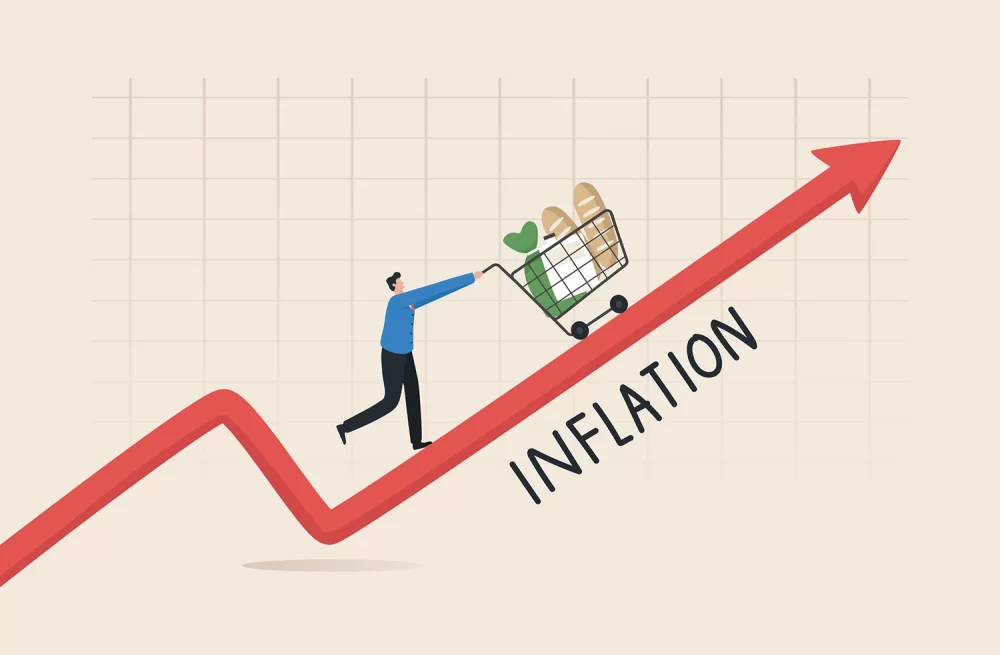My, how time can fly by. A little over a year ago, I posted an article dubbed “Inflation Crisis”, in which I opined about the dramatic rise in prices in both goods and services, the likes of which inflation hasn’t had an effect on in 40 years. Included in that article was what I believed Fed Chair Jerome Powell could do to bring a halt to inflation, but not without collateral damage, namely higher borrowing costs, negative effects on bond prices and eventually, a recession. So far, we’ve definitely had higher borrowing costs, as well as lower bond prices, but no recession.
At present, there have been eight increases since March 2022, leading to a current Federal Funds rate of 4.75% (as of 3/14/2023), which was last visited on October 2007. This is a fairly dramatic upside move, considering approximately one year ago the same rate stood at .5%! As one might expect, borrowing costs for virtually everything have increased correspondingly, which is pretty much the point. In order to cool inflation, demand must be cooled as well and, what better way to do so than to increase the cost of borrowing money to make a purchase more expensive. So far, the increases seem to be having some effect (as of 2/28/23, the annual inflation rate stood at 6%, versus 6.4% as of 1/31/2023; Y Charts.com), but as long as there’s low unemployment, there will be demand. Regardless, with higher rates having a definite effect on auto sales, home sales and other time-based purchases, those in the market for making those purchases want to know how much longer the Fed will continue to raise rates.
Jerome Powell has stated that the inflation target the Fed is striving for is 2% (although the average inflation rate between 1960 and 2021 was 3.8%; Worlddata.info). This number, in their opinion, should bring inflation back to a manageable level, while also keeping deflation in check (more on that in a bit). So, if inflation currently stands at approximately 6%, but the Fed desires 2% and each rate of increase is between .25% and .75%, it stands to reason that it’s going to take a while before the Fed is finished with their task.
But what about the other “collateral damages” associated with rising interest rates that I alluded to? The two recent bank failures (Silicon Valley Bank [SVB] and Signature Bank) had their failures either directly or indirectly tied to the effects of rising rates on bond prices. In SVB’s case (directly), the bank was forced to liquidate their long bonds to meet customer withdrawals. In a more “normal” interest rate environment, this wouldn’t be an existential issue for a financial institution, since there shouldn’t be too much of price difference between when a bond is bought versus when it was sold on the open market if need be (remember that there is an inverse relationship to the price of bonds versus their yields, meaning that if yields rise, prices fall and vice versa).
However, in this case, since SVB was forced to liquidate their longer dated bonds which were likely purchased when interest rates were significantly lower (and the fact that interest rates have risen significantly over the past year), the value of those bonds had fallen significantly as well. This isn’t a problem if the bonds are held to maturity, when the holder receives the full value back (known as “par value”), but in this case, when the holder needs immediate cash, selling them before maturity means receiving current market value. Since current rates are much higher today, the value of those bonds sold fell dramatically. This led to a huge losses, which in turn translated into a plummeting stock price. Cue the regulators. In Signature Bank’s case, the effect of the SVB collapse led to their depositors withdrawing billions of dollars, leading to the shuttering of that financial institution as well.
Whether or not this will be a contagious situation is anyone’s guess at this point. This is however, a question gaining more attention, since there may be more banks stressed with too many long dated bonds. If rates continue to rise, the market value of those banks’ bonds may also continue to fall. Does Powell and Co. continue to raise rates to combat inflation and risk additional bank stress or do they pause to see if there are any other bank casualties while allowing inflation to continue its run? A topic for another post…
That leaves the last of the three collateral damages I referred to, that of an impending recession. If Powell can get a grip on inflation through the raising of interest rates without slowing the economy too much, this is referred to as a “soft landing”. However, if no tangible result of less inflation emerges unless more aggressive rate hikes ensue, that translates into a much slower economy, leading to a recession (“hard landing”). In that scenario, fewer goods and services are bought, so it stands to reason that GDP (Gross Domestic Product) will retreat as well. This usually leads to shrinking revenues and profits for corporate America (aka lowered earnings). Since the equity markets don’t take too kindly to lowered earnings, the translation here, generally speaking, is that of lowered stock prices and a lower equity market.
Lower earnings usually translate into layoffs, since reduced sales mean fewer workers needed to produce fewer goods and/or experiences. You may have noticed that tech companies of late have already started reducing their employment ranks. It may be only a matter of time until non-tech companies do the same. If so, the extent to which the US enters into a recession will depend on the amount of layoffs done within the broader economy. If a recession does indeed occur, the question then becomes how broad and deep will it be? If there is one upcoming, the severity will determine if the economy transitions from inflation to deflation. Assuming the Fed does indeed quash demand, at some point businesses will lower prices in an attempt to attract consumers and generate sales. The problem here is that of a gun-shy consumer.
A slow economy means first and foremost a cautious consumer. Secondly, if the consumer is interested in purchasing, they may very well believe even lower prices are yet on the horizon, leading them to wait longer to buy. If businesses oblige, prices continue to fall, leading to a deflationary environment. Although a win for the consumer, a business can only go so long until additional layoffs happen, leading to an even higher unemployment rate. This is known as a “deflationary spiral”. Jerome Powell’s job truly is a “balancing act”.
That should do it for this post installment. If the past year has shown us anything, there will always be more to comment on.
Once again, I thank you for reading and hope I’ve brought value to your time. If you’d like to learn more about what I’ve discussed here or just wish to comment, please contact me at d.babecki@db3insuranceservices.com or give me a call at 941-704-3134. As always, thank you for reading and let me know how I can be of service.
About David J Babecki
David Babecki is the Owner/Founder of DB3 Insurance Services and has over 20 years of experience in personal insurance, proudly protecting clients against outliving their money, stock market risk, and of course, insuring their lives against the unforeseen.
David started his career with Raymond James & Associates in 2000 before becoming an independent agent where he offers a number of services to solve client needs. David has spent the majority of his life in the beautiful Tampa Bay area where he currently resides with his family.
David is a Licensed Life Insurance Agent FL # D053146
The above article reflects the opinions and thoughts of David J. Babecki. The information contained in this material is believed to be reliable, but not guaranteed. It is for informational purposes only and is not a solicitation to buy or sell any products which may be mentioned. It is not intended to be used as the sole basis for financial decisions, nor should it be construed as advice designed to meet the particular needs of an individual’s situation.
Please note: All guarantees and/or promises are based on the claims-paying ability of the respective insurance company.




